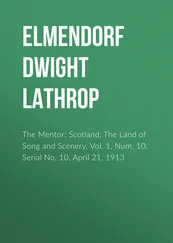The terms of Saskia’s will are interesting, in that they may throw some light upon a later action of the artist’s, which will be related further on. She left her money to their son Titus, with Rembrandt as sole trustee, and with full use of the money until he should marry again or until the marriage of Titus.
It was in 1642 also that Rembrandt painted his most famous picture – the “Night Watch.” This is one of the landmarks of Rembrandt’s career. However, it is not a night watch at all, but a call to arms by day, and more properly should be named the “Day Watch.”
The artist’s life was changed after the death of his wife. No longer does he appear to have been the buoyant, carefree painter and art lover. There is a pathetic sadness in many of his works done at this time. This is well illustrated in his pictures of the Holy Family, a subject which was a favorite with him during this period of his life.
One reason for Rembrandt’s unhappiness was his waning popularity. The “Night Watch,” which was painted to order as a collection of portraits in one composition, did not prove satisfactory to his customers. Some of them complained of being put in the background and obscured. Naturally, the artist could not give places of prominence to every person in the picture. Not understanding this, however, these people took offence at his disposition of the characters, and transferred their patronage elsewhere.
It was at this time that Rembrandt did a great deal of landscape painting, and genius that he was, he made a success of it. It is to this period that the famous painting, “The Mill,” is ascribed.
But though he was still the great artist, a cloud of adversity was slowly coming over Rembrandt’s life. Evil days were at hand.
PREPARED BY THE EDITORIAL STAFF OF THE MENTOR ASSOCIATION
ILLUSTRATION FOR THE MENTOR, VOL. 4, No. 20, SERIAL No. 120
COPYRIGHT, 1916, BY THE MENTOR ASSOCIATION, INC

IN THE WIDENER COLLECTION, PHILADELPHIA
THE MILL, By Rembrandt
THREE
During the last part of the seventeenth century money was scarce in Holland. Long continued wars and civil troubles had worn out the country. Financial depression overwhelmed Amsterdam; and in addition to this the taste in art changed, and Rembrandt and his pictures were neglected.
Most of Rembrandt’s money was tied up in his house and in his large collection of valuable pictures; and when his paintings ceased to be in demand, he was forced to borrow money. Very little is known of the artist’s life at this time. He was living with his servant, Hendrickje Stoffels, and in 1654 a child was born to them. To her Rembrandt gave the name of Cornelia, after his much loved mother. It has been asserted that he married Hendrickje, but it is probable that he did not, for in such a case the money left by Saskia would have gone at once to her son Titus, according to the will.
In 1656 Rembrandt’s financial affairs went crashing down to ruin. By a process of law his house and land were transferred to Titus. But as his son was still a minor, Rembrandt was allowed to remain in charge of Saskia’s estate. And then ruin stared him in the face. In July, 1656, Rembrandt was declared bankrupt, and an inventory of his property was ordered. Two years later the larger part of his collection of etchings and drawings was sold. The sum realized was only a small fraction of their value.
Rembrandt, driven from his house, stripped of everything he possessed, without friends or money, took a modest lodging in Amsterdam. The city which once had acclaimed him as its greatest portrait painter now passed him by and left him alone to wait for death.
During all these dark years, however, Rembrandt was painting some of his greatest pictures. Even amid the ruins of his affairs he could go calmly on working; and for this he deserves the highest respect. Among the works of this time are the portrait of Jan Six, the “Adoration of the Magi,” and “John the Baptist Preaching in the Wilderness.” At the same time he continued to paint his own portrait; but in these pictures of the artist in his old age we see a man broken by misfortune.
Titus, Rembrandt’s only son, had married. He died in 1668, leaving one child. A year later, on October 8, 1669, Rembrandt himself passed away. In the “Livre Mortuaire” of the Wester Kerk in Amsterdam appears the following simple entry, relating to his death: “Tuesday, 8th Oct., 1669, Rembrandt van Rijn, Painter on the Rovzegraft, opposite the Doolhof. Leaves two children.”
Rembrandt outlived his popularity, although he was the greatest genius of his time and country, and in fact one of the great geniuses of all time and all countries. He was left to die alone and neglected by his fellow-countrymen, who had they foreseen the fame that the future held in store for him, might have sought his humble lodging to honor him on bended knee.
PREPARED BY THE EDITORIAL STAFF OF THE MENTOR ASSOCIATION
ILLUSTRATION FOR THE MENTOR, VOL. 4, No. 20, SERIAL No. 120
Конец ознакомительного фрагмента.
Текст предоставлен ООО «ЛитРес».
Прочитайте эту книгу целиком, купив полную легальную версию на ЛитРес.
Безопасно оплатить книгу можно банковской картой Visa, MasterCard, Maestro, со счета мобильного телефона, с платежного терминала, в салоне МТС или Связной, через PayPal, WebMoney, Яндекс.Деньги, QIWI Кошелек, бонусными картами или другим удобным Вам способом.













